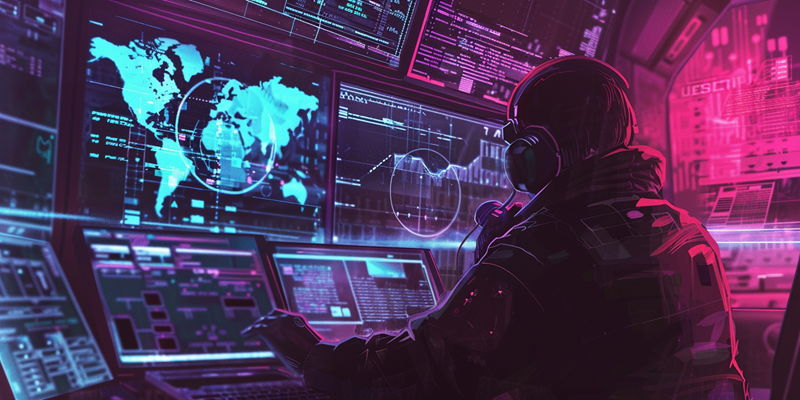The cybersecurity landscape is currently facing a surge in threats, particularly from infostealer malware, which targets sensitive data theft. Kaspersky Digital Footprint Intelligence has released a report indicating a shocking sevenfold increase in these threats, with nearly 10 million devices compromised. Attackers are increasingly sophisticated in their methods, resulting in an alarming rate of stolen credentials—approximately 50.9 per affected device. This massive breach presents severe risks, including unauthorized access to accounts and potential financial fraud. The cybersecurity community is on high alert as it confronts the challenges posed by this escalation in cyber threats. The trend underscores the urgent need for robust security measures to protect digital information from these advanced and highly disruptive infostealer tactics.
The Global Spread of Cybersecurity Breaches
The Prevalent .com Domain Attacks
Cybercriminals have targeted the .com domain, arguably the most sought-after virtual territory, resulting in over 325 million compromised accounts worldwide. This exemplifies the sheer scale and relentless nature of modern cyber attacks. Numerous nations have been impacted, including the UK, which has experienced over 2.5 million breaches. Brazil, India, Colombia, and Vietnam are also among those significantly affected. In response, companies operating within .com domains find themselves perpetually on high alert, investing heavily in bolstering their cyber defenses. This continuous onslaught of digital threats has made it clear that securing online assets is an ongoing battle that requires vigilance and sophisticated security strategies to protect against the ever-evolving tactics of online adversaries. The global reach of these incidents underscores the universal vulnerability of digital systems and the need for international cooperation to combat cyber threats.
Aftermath of Credential Thefts
The alarming growth in infostealer malware has created a shadow economy online. On the dark web, stolen personal credentials are traded for as little as $10, highlighting the sheer scale and ease of trading in pilfered data. This underworld market utilizes a range of channels, such as subscriptions for regular data dumps, bespoke aggregators of tailored data, and premium sellers of the latest stolen information. The market’s operation implies a significant undetected problem, with estimates suggesting up to 16 million devices could be compromised. If accurate, such a number of infected devices have the potential to flood the black market with a vast amount of sensitive personal data, ripe for exploitation by cybercriminals. This scenario paints a picture of a vast and sophisticated digital underground economy thriving on the theft and sale of confidential information, with the true scope and impact of this issue perhaps yet to be fully revealed.
Countermeasures and Cybersecurity Strategies
Protective Measures for Individuals
In the ongoing battle against cyber threats, individual users stand as the first line of defense. It’s crucial that users recognize the threats posed by malware and take decisive action to protect their devices by deploying robust security measures. Companies like Kaspersky stress the importance of software that doesn’t just block malware but also keeps a vigilant eye for unusual behavior. Personal diligence is equally essential in safeguarding against malicious attacks. This means staying alert to phishing schemes, creating strong, intricate passwords, and regularly updating these security keys. By remaining vigilant and attentive to cybersecurity practices, users can significantly narrow the opportunities for hackers to penetrate their digital lives. It’s a shared responsibility, where a combination of advanced security software and smart online habits can build a formidable barrier against cyber intrusions.
Organizational Defense Mechanisms
Companies have a major responsibility to protect their online platforms, deploying advanced cybersecurity measures to anticipate and thwart potential breaches. Key strategies include regular checks for data leaks, mandating frequent password changes, and implementing multi-factor authentication. The digital era demands that businesses, whether big or small, not only pour resources into cutting-edge cyber defense mechanisms but also nurture a culture of security awareness among their employees. This comprehensive approach to cybersecurity is crucial for businesses aiming to prevent data theft and to react effectively and rapidly when security incidents occur. Hence, investing in robust security infrastructure and ongoing staff education is imperative for the longevity and resilience of any enterprise in today’s interconnected world.

